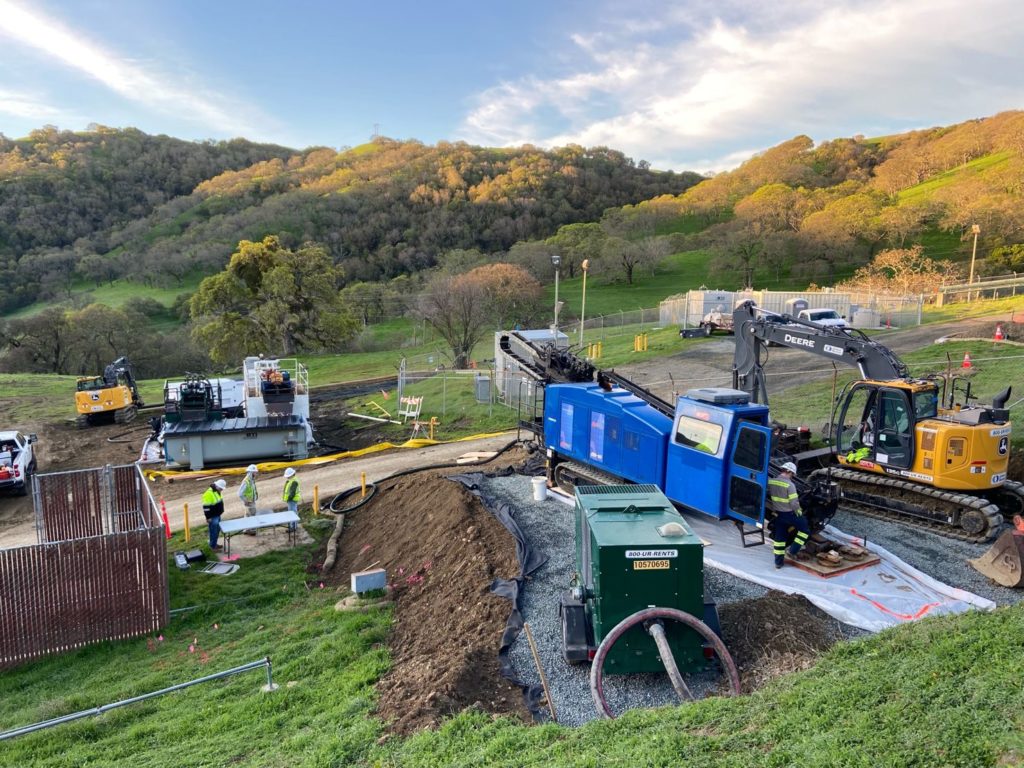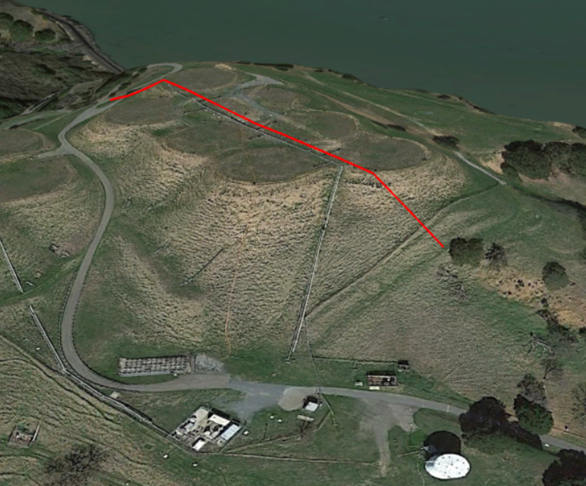Horizontal Wells Project Highlight – California
Ellingson recently completed the installation of four horizontal wells at a former defense fuel support site in California. Project objectives included installation of three horizontal soil vapor extraction wells and one groundwater drainage well. Screen intervals targeted the area beneath existing, semi-buried fuel storage tanks. Tank locations on a relatively steep hillside presented significant challenges for equipment staging.
Horizontal Wells on a Steep Hillside
All four wells consisted of 4-inch High Density Polyethylene (HDPE) casing and screen. Additionally, each well construction involved double-ended installation methods. Well lengths ranged from 800 to 930 feet in total measured length. The geology consisted of relatively hard marine siltstone, sandstone, and metasediments common to the California Coastal Ranges.
Project challenges included the site geology, geography, and existing infrastructure. To address the metasedimentary rock underlying the site, the crew mobilized a downhole mud motor with the rig. In addition to the extra down-hole equipment, entry and exit locations required extensive preparation. Not only did suitable pads need to support the drill rig, but they needed to provide access for drilling water, materials and the mud recycling equipment.

Fig 1: Horizontal wells installed from a drill pad perched on a steep hillside
As the wells were drilled in sequence, field crews optimized site preparation activities to reduce the need to move the mud system and waste containment vessels. The image below shows the general area, with the red line showing the general trend of the four wells.
Surface Infrastructure Presents Steering Challenges
The tanks themselves, beneath which the bores were advanced, were constructed of a unique steel liner, embedded in concrete, wrapped in cable, and buried in soil. This construction prevented the use of typical walkover or magnetic guidance. So, crews used an inertial guidance system consisting of a Gyroscopic Steering Tool (GST) to steer the bores. Ellingson contracted with Sharewell HDD, our frequent partner for advanced navigation projects, to provide the steering tooling and personnel.

Fig 2: General area of the project. Red line illustrates general trend of the horizontal wells underneath buried steel tanks.
Mobilization and setup on the site commenced on January 6, 2022. Due to the steep hillsides, equipment setup required several days, with drilling of the first well starting on January 11.
Each well took approximate 15 days start to finish. Initially the crews completed drilling, reaming and pipe installation. Then came grout seal emplacement, and well development for each of the wells. However, work progressed sequentially to accommodate site pad logistics.
Eventually the project wrapped up around the end of March, with all wells successfully installed to length.
Tags: difficult access, environmental remediation, groundwater remediation, horizontal wells, SVE